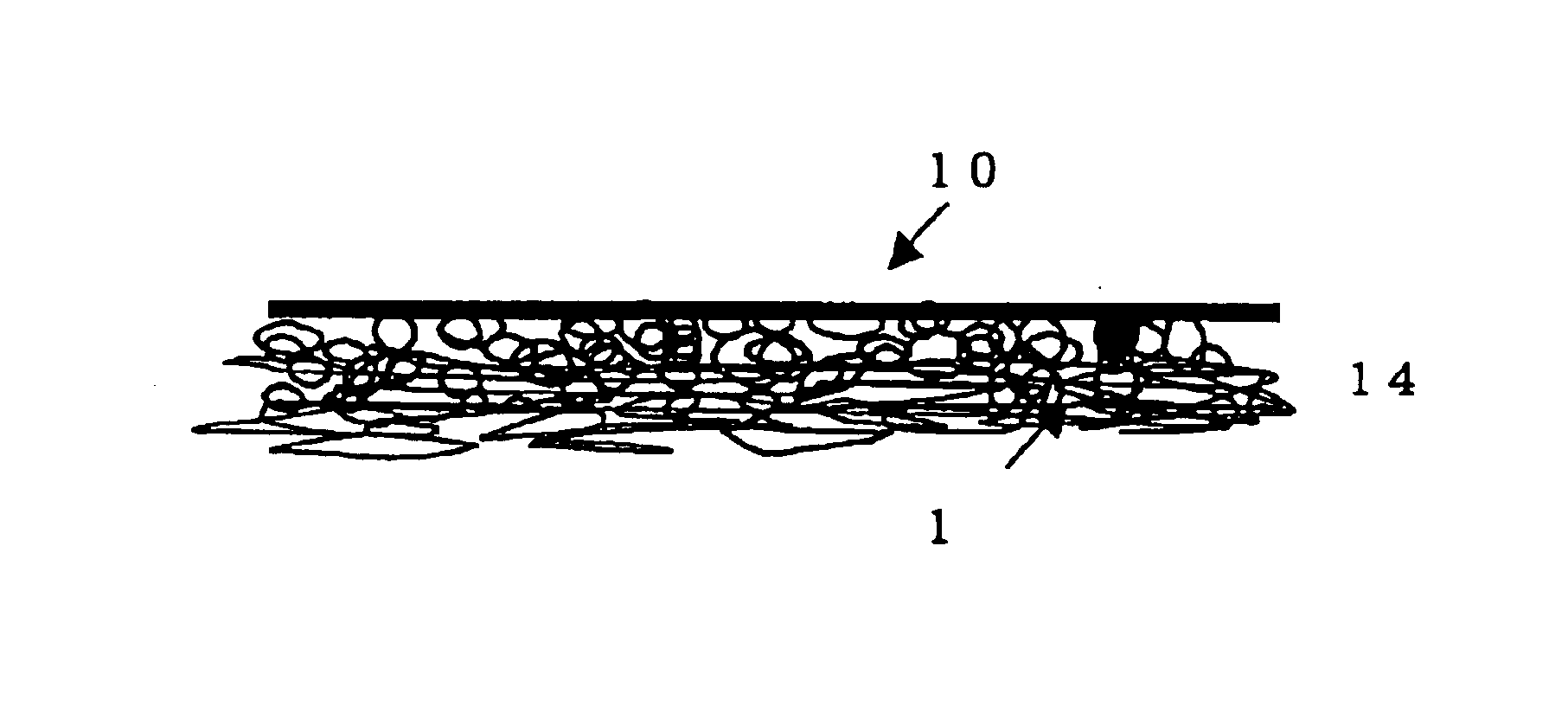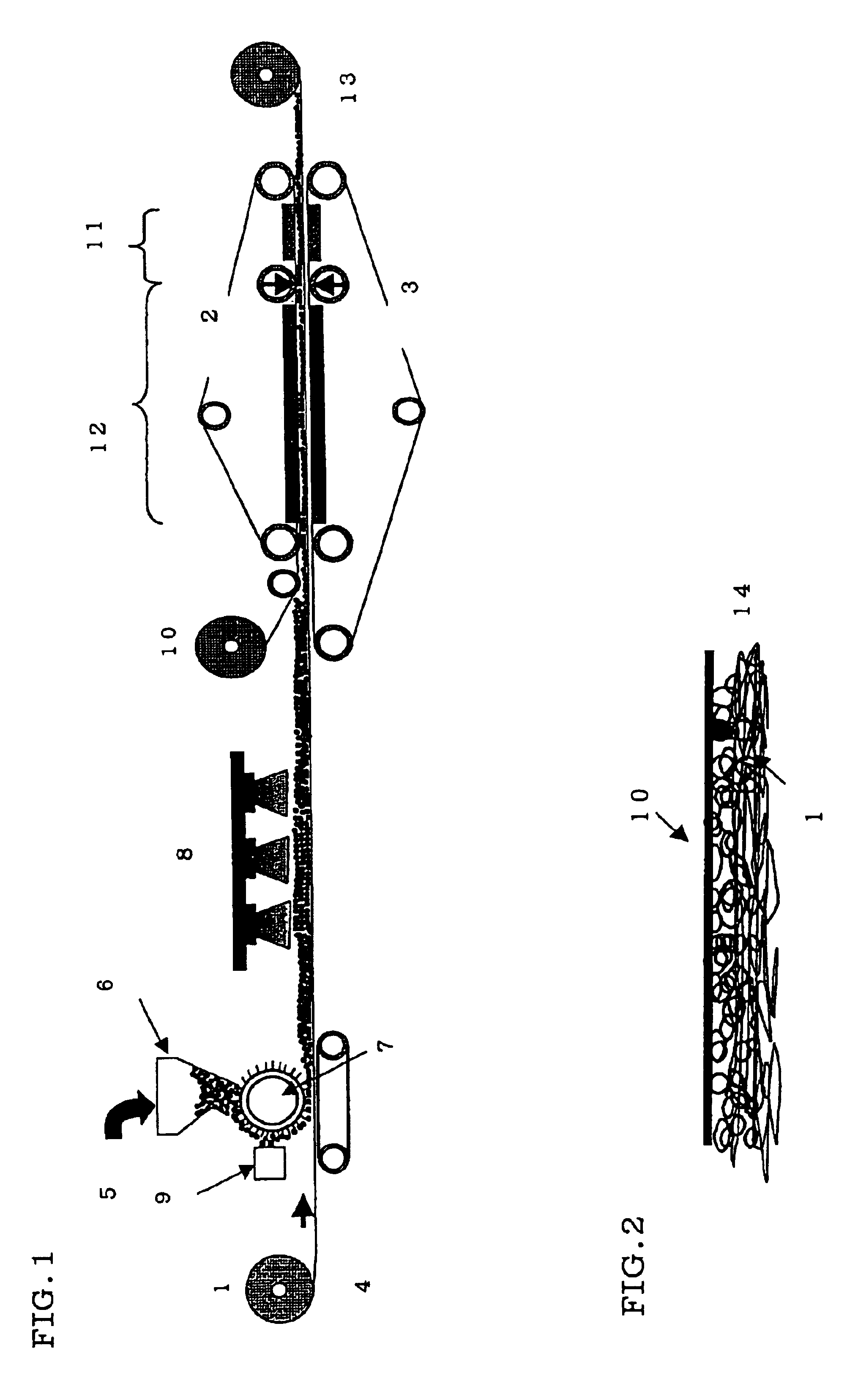Adsorptive sheet and filter for clarifying air
a filter and air technology, applied in the field of adsorption sheets, can solve the problems of consuming considerable amounts of energy and time, no manufacturing method is practicable, and no conventional filter fully satisfies the important characteristics
- Summary
- Abstract
- Description
- Claims
- Application Information
AI Technical Summary
Benefits of technology
Problems solved by technology
Method used
Image
Examples
example 1
[0074]Weighed were 1 kg of granular activated carbon from coal (with an average particle diameter of 300 μm and a toluene adsorption ability of 47% by weight measured according to JIS K 1474) and 0.1 kg of a powdered thermoplastic resin (Flo-Beads EA209 manufactured by Sumitomo Seika Chemicals Co., Ltd. (an ethylene-acrylic acid copolymer material with an average particle diameter of 10 μm, an MI value of 9 g / 10 minutes and a melting point of 105° C.)), and stirred and mixed in a small hoop shaker (Kyomachi Ltd.) at 20 rpm for about 10 minutes. In the resulting mixed powder taken out of the container, the resin was held on the surface of the activated carbon to give a whitish appearance. At this time, the whole moisture content was 8% by weight. Sheet A was used as the base sheet, on which the resulting mixed powder was spread at a density of 240 g / m2. Sheet B was then superposed over the base sheet and subjected to hot pressing, cooling and winding, so that the desired adsorption s...
example 2
[0077]An adsorption sheet was prepared using the process of Example 1, except that the powdered thermoplastic resin used was Flo-Beads LE2080 manufactured by Sumitomo Seika Chemicals Co., Ltd. (a low-density polyethylene material with an average particle diameter of 12 μm, an MI value of 70 g / 10 minutes and a melting point of 105° C.). A good result was obtained.
example 3
[0078]An adsorption sheet was prepared using the process of Example 1, except that the powdered thermoplastic resin used was Petrothene 202 manufactured by Tosoh Corporation (a low-density polyethylene material with an average particle diameter of 30 μm, an MI value of 24 g / 10 minutes and a melting point of 106° C.). A good result was obtained.
PUM
| Property | Measurement | Unit |
|---|---|---|
| fiber packing density | aaaaa | aaaaa |
| particle diameter | aaaaa | aaaaa |
| concentration | aaaaa | aaaaa |
Abstract
Description
Claims
Application Information
 Login to View More
Login to View More - R&D
- Intellectual Property
- Life Sciences
- Materials
- Tech Scout
- Unparalleled Data Quality
- Higher Quality Content
- 60% Fewer Hallucinations
Browse by: Latest US Patents, China's latest patents, Technical Efficacy Thesaurus, Application Domain, Technology Topic, Popular Technical Reports.
© 2025 PatSnap. All rights reserved.Legal|Privacy policy|Modern Slavery Act Transparency Statement|Sitemap|About US| Contact US: help@patsnap.com


